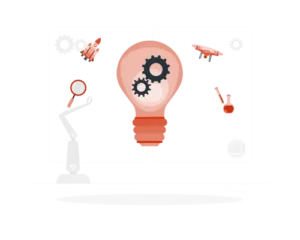In today’s rapidly evolving technological landscape, businesses are constantly seeking innovative ways to streamline their operations, improve efficiency, and reduce costs. Two key solutions that have gained significant attention are Robotic Process Automation (RPA) and Intelligent Automation. While these terms are often used interchangeably, they represent distinct approaches to automation. In this blog post, we will delve into the nuances that set RPA apart from Intelligent Automation, helping you understand which solution aligns best with your organization’s needs.
What Is Robotic Process Automation (RPA)?
Robotic Process Automation, or RPA, is a technology that employs software robots (bots) to automate rule-based and repetitive tasks. These bots are programmed to mimic human interactions with digital systems, such as data entry, copy-pasting, and transaction processing. RPA is known for its efficiency in executing mundane, manual tasks with high accuracy and speed.
The Core Features of RPA
Rule-Based Automation:
RPA excels at automating tasks that follow specific, predefined rules. It operates in a structured environment, where tasks are repetitive and highly predictable.
Limited Cognitive Abilities:
Unlike humans, RPA bots lack cognitive abilities, making them unable to adapt to changing circumstances, solve complex problems, or handle unstructured data.
Quick Implementation:
RPA is relatively easy to implement, often requiring minimal changes to existing systems. It can be set up quickly to perform routine tasks, leading to rapid ROI.
What Is Intelligent Automation?
Intelligent Automation is a more comprehensive approach to automation that combines elements of artificial intelligence (AI), machine learning, and cognitive technologies with RPA. It aims to automate not only rule-based tasks but also processes that require cognitive decision-making. Intelligent Automation goes beyond mere task automation, offering the potential for greater business impact and transformative change.
The Core Features of Intelligent Automation
Cognitive Capabilities:
Intelligent Automation systems can understand, interpret, and make decisions based on unstructured data. They have the ability to learn and adapt to changing scenarios.
Process Transformation:
Unlike RPA, Intelligent Automation focuses on the entire business process rather than individual tasks. It can optimize end-to-end processes by incorporating AI and machine learning.
Data Analytics:
Intelligent Automation leverages advanced data analytics to extract insights from structured and unstructured data, enabling better decision-making and strategic planning.
Key Differences Between RPA and Intelligent Automation
Scope of Automation
RPA is primarily designed for rule-based, repetitive tasks, while Intelligent Automation extends its capabilities to include complex, cognitive tasks that require human-like decision-making.
Adaptability:
RPA lacks adaptability and cannot handle tasks beyond its pre-defined rules. In contrast, Intelligent Automation has the ability to adapt to changing circumstances and evolve with the business.
Data Processing:
RPA deals with structured data efficiently but struggles with unstructured data. Intelligent Automation, on the other hand, can handle both structured and unstructured data effectively, providing a broader range of applications.
Scalability:
RPA is often employed at the task or department level, while Intelligent Automation can be scaled to impact entire business processes, leading to greater efficiency and cost savings.
Strategic Insights:
Intelligent Automation offers deeper insights through data analytics, providing valuable information for strategic planning, which RPA lacks.
When to Use RPA vs. Intelligent Automation
Use RPA when:
– You have repetitive, rule-based tasks that do not require complex decision-making.
– You need a quick and cost-effective solution for improving operational efficiency.
– Your focus is on automating specific tasks within a department rather than transforming entire processes.
Use Intelligent Automation When:
– You have tasks that involve complex data analysis, decision-making, and adaptability.
– Your goal is to optimize and transform end-to-end business processes for greater efficiency and competitive advantage.
– You want to leverage data-driven insights for strategic decision-making.
Real-World Examples
RPA in Action:
A leading financial institution uses RPA to automate routine data entry tasks in their customer onboarding process. This has reduced errors and improved customer satisfaction by accelerating account activation times.
Intelligent Automation in Action:
A global logistics company employs Intelligent Automation to optimize its supply chain operations. The system uses AI and machine learning to predict demand, manage inventory, and reduce transportation costs, leading to substantial savings.
Conclusion
In summary, while Robotic Process Automation (RPA) and Intelligent Automation share common objectives of automation and efficiency, they differ significantly in their capabilities and applications. RPA is ideal for rule-based, repetitive tasks, offering quick and cost-effective automation. On the other hand, Intelligent Automation is a more comprehensive approach, combining AI and machine learning to automate complex, cognitive tasks and transform entire business processes.
Choosing between RPA and Intelligent Automation depends on your organization’s specific needs and goals. By understanding these differences, you can make an informed decision that aligns with your business objectives and ensures you leverage the right automation solution to drive success in today’s competitive landscape




